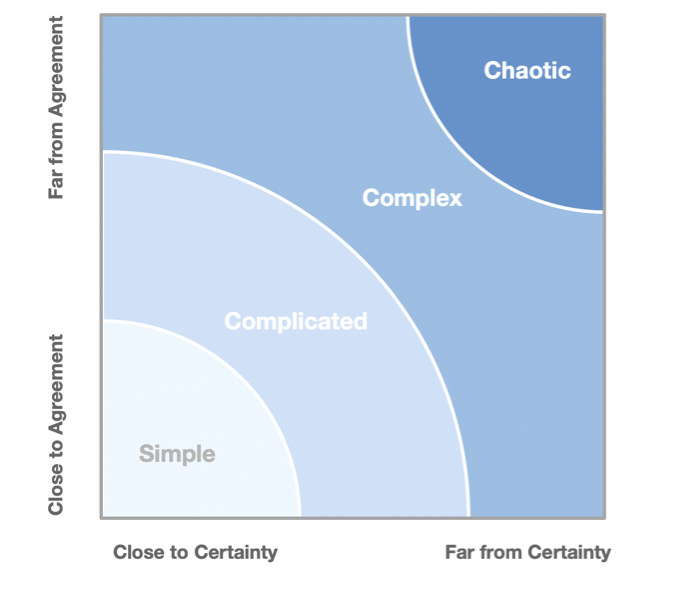One reason that leaders are reluctant to empower their staff is their worry that they won't be able to deal with adverse situations. This may be true for some individuals, but you will be surprised by how your people will rise to the challenge when you trust them, and encourage them to explore the art of the possible, without fear of recrimination if matters don't go well.
No workplace is simple. In a well ordered company, in a stable environment the relationship between cause and effect is clear. Certain parts of certain team members' roles may be uncomplicated, but there are always many 'rainy day' scenarios that need dealing with.
Best practice is past practice, so, in terms of Digital Transformation look out for complacency setting in and challenge your team to find new ways of delivering customer value.
Matters are complicated when there is more than one way to proceed. The relationship between cause and effect requires analysis: assess the facts, think through some options and apply appropriate best practice. Then repeat until an acceptable outcome results.
In terms of Digital Transformation, empowering your staff to use their judgement and make decisions is a good practice.
Matters are complex when there are no correct answers. The challenge cannot be reduced to component parts and reconstructed. The very act of reduction causes further unpredictability. Cause and effect is only apparent after the event. However, patterns can emerge, and will do so if enough attempts are made to make sense of the complexity.
In terms of Digital Transformation, setting up small, self-directed teams, who make minor changes to products with known behaviours and then immediately testing that change is a good practice. If it fails, then rollback and try again; experimentation is encouraged, failure adds to the sum of experience, which leads to the inevitable success.
Matters are chaotic when the cause and effect are unclear. Action is required - a knowledge-based response will be too long coming. The imperative is to act to gain an element of control, sense where the stable ground is and then move to the stable ground. Communication is direct top-down broadcast, there is rarely time to gain consensus. In effect, this buys time, effectively downgrading the chaotic to the merely complex.
In terms of Digital Transformation, the time of marketplace stability, repeated consumer behaviour and slowly evolving technology is long gone - what we understood yesterday is no longer is certain tomorrow. Change is ever present. With little control left, companies must increase their influence as certainty diminshes, and put in place organisational structures and behaviours that deliver agreement on how to respond and which provide essential organisational agility.
Agreement-Certainty Model
The link between simple, complicated, complex and chaotic situations may also be linked by the degree of agreement and the degree of certaintly which exists around a course of action. Agreement and certainty makes for an uncomplicated life.

